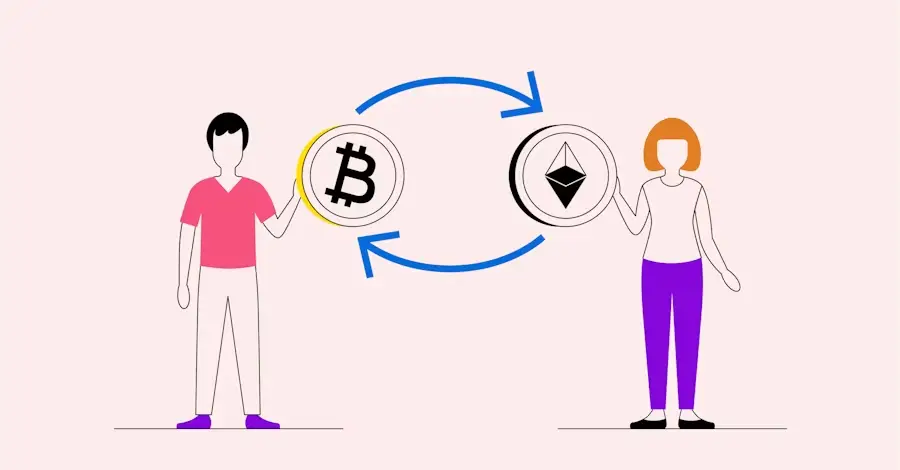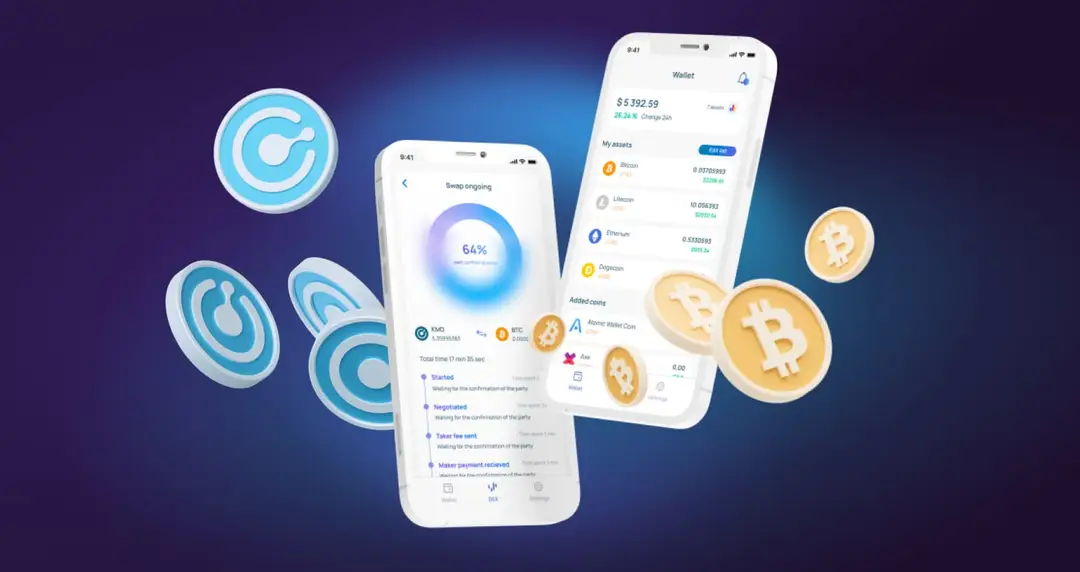返回
Atomic SWAP
DeFi
Basics
By HackQuest
Jul 24,20243 min readWelcome to the Web3 world, where cryptocurrencies, blockchain, and a unique culture converge. Entering the world of Web3 can be both thrilling and overwhelming, especially when faced with the seemingly cryptic language used by enthusiasts. Don't worry if you feel they sound like some secret codes; we are here to unravel their meaning in Web3 context. In this article, we are going to introduce: [Atomic SWAP].
What Does 'Atomic Swap' Mean?
In the context of Web3, an Atomic Swap is a smart contract technology that enables the exchange of one cryptocurrency for another without the need for a centralized intermediary, such as an exchange. Atomic swaps can occur directly between different blockchains or within the same blockchain, facilitating a decentralized and trustless exchange of assets.

Source: Bitpanda
Origins of Atomic Swap
The concept of atomic swaps was first proposed by Tier Nolan in 2013. The idea was to allow two parties to trade cryptocurrencies directly from their wallets without relying on a third party. This decentralized approach aligns with the core principles of blockchain technology—security, transparency, and eliminating intermediaries. Over the years, atomic swaps have been implemented in various forms across different blockchain platforms, enhancing interoperability and liquidity in the crypto ecosystem.
How Atomic Swaps Work in Web3
Cross-Chain Atomic Swaps
Basic Description: Cross-chain atomic swaps enable the exchange of cryptocurrencies across different blockchains. This is achieved through hash time-locked contracts (HTLCs), which ensure that the trade is completed atomically—either both parties receive their exchanged assets, or no transaction occurs at all.
Examples: A user can swap Bitcoin (BTC) for Litecoin (LTC) using an atomic swap. The process involves both parties agreeing on a secret hash value. The swap is initiated when one party reveals the hash, and it is completed when the other party verifies and uses the hash to unlock their respective assets.
Advantages: Enables decentralized trading without a central exchange. Enhances security by reducing the risk of fraud and hacking associated with centralized exchanges.
Challenges: Requires both blockchains to support the same cryptographic hash function and time-lock functionality. Limited by the technical compatibility of different blockchains.
Intra-Chain Atomic Swaps
Basic Description: Intra-chain atomic swaps occur within the same blockchain, allowing for the exchange of different tokens or assets on that blockchain. This type of swap leverages the same HTLC mechanism to ensure atomicity.
Examples: On the Ethereum blockchain, a user can swap Ether (ETH) for an ERC-20 token using an atomic swap. Both assets are locked in smart contracts that release them only when the conditions of the swap are met.
Advantages: Simplifies the exchange process within a single blockchain. Provides a trustless and secure way to trade assets without an intermediary.
Challenges: Dependent on the blockchain's smart contract capabilities and the compatibility of the assets being swapped. Transaction fees and network congestion can affect the efficiency of the swap.
Decentralized Exchanges (DEXs) and Atomic Swaps
Basic Description: Many decentralized exchanges (DEXs) utilize atomic swap technology to facilitate peer-to-peer trading. DEXs provide a platform where users can list their assets for atomic swaps, enhancing liquidity and accessibility.
Examples: Platforms like Komodo and AtomicDEX offer atomic swap functionality, allowing users to trade a wide range of cryptocurrencies directly from their wallets.
Advantages: Combines the benefits of DEXs with the security and efficiency of atomic swaps. Increases the liquidity and usability of cryptocurrencies by enabling direct trades.
Challenges: User experience and interface complexity can be a barrier for new users. The need for compatible wallets and understanding of atomic swap mechanisms can be challenging.

Source: AtomicDEX
Challenges and Future Directions
While atomic swaps offer significant benefits, they are not without challenges. One major issue is the need for compatible cryptographic functions and protocols across different blockchains. This limits the number of blockchains that can participate in atomic swaps. Additionally, the complexity of setting up and executing atomic swaps can be a barrier for less technical users.
Future directions for atomic swaps include the development of more user-friendly interfaces and tools to simplify the process. Enhanced interoperability protocols and cross-chain bridges are also being explored to expand the range of compatible blockchains. As the technology matures, atomic swaps are expected to become a standard feature in decentralized trading platforms, further decentralizing and democratizing the crypto trading ecosystem.
Conclusion
Atomic swaps are a revolutionary technology in the Web3 space, enabling secure and decentralized exchange of cryptocurrencies without the need for intermediaries. By understanding how atomic swaps work and the various applications and challenges involved, users can leverage this technology to engage in trustless and efficient trading.